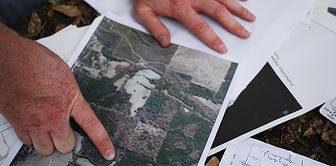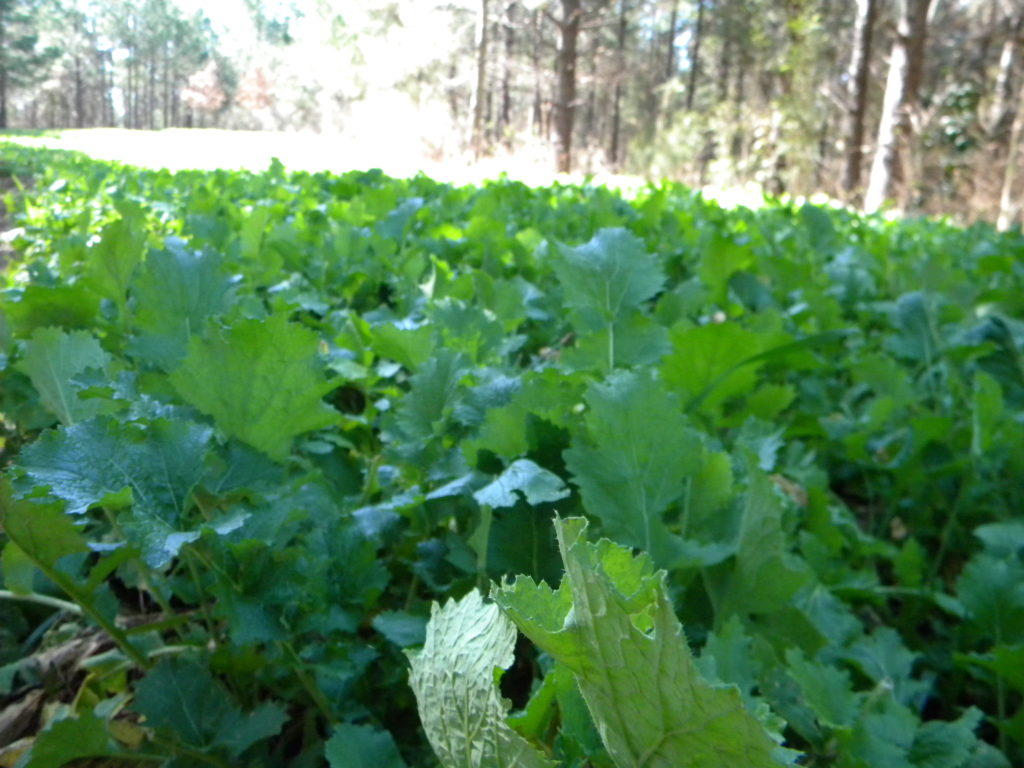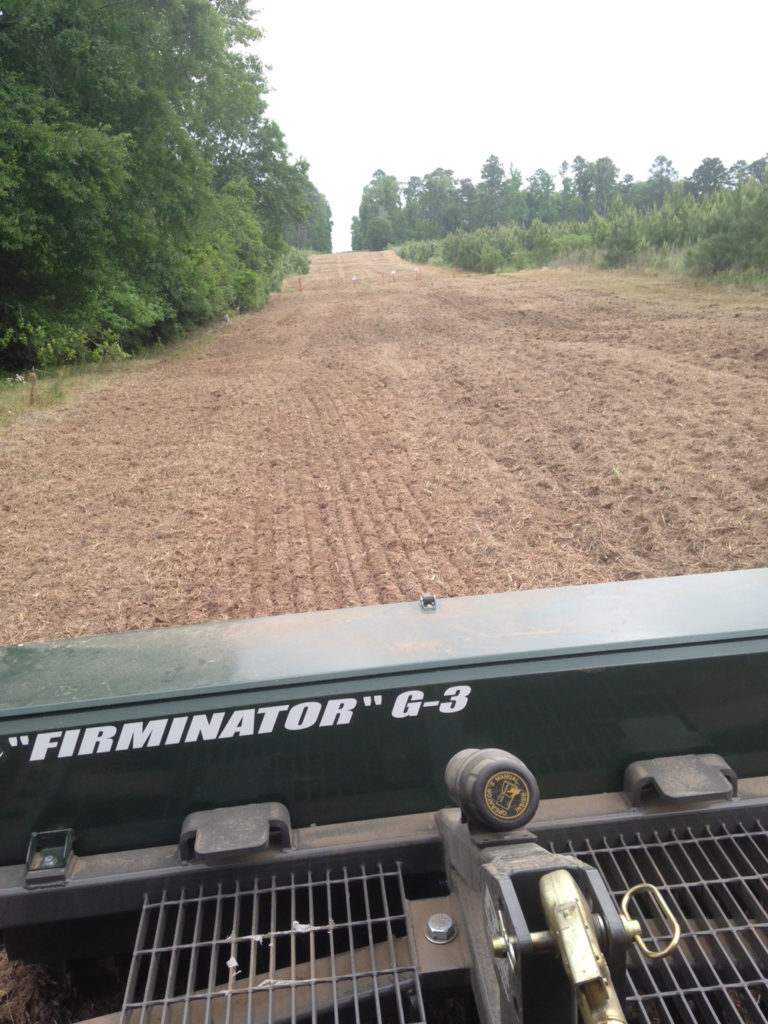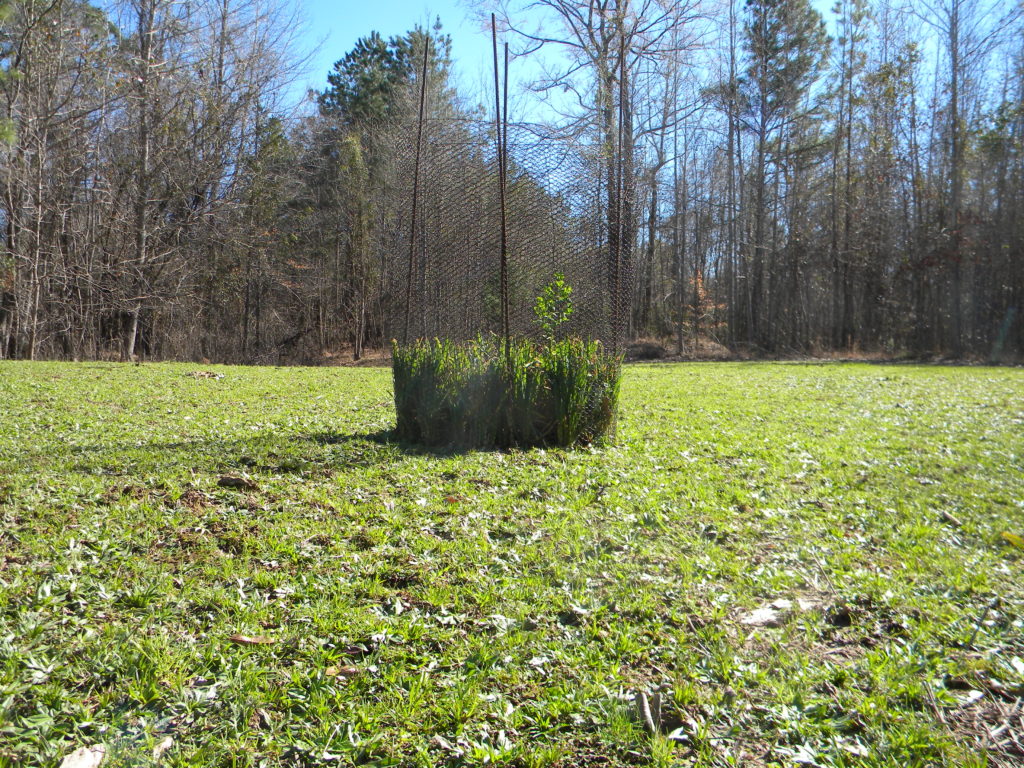
Photo Taken By: Nature's Eye
White-tailed Deer Food Plots – Not Another Food Plot Article
By: Emily Courtney – Nature’s Eye Consulting
To the modern hunter and wildlife manager, food plots are the standard, the go-to, or even the miracle cure for any hunting property. In some cases, they are the only habitat improvements that take place. However, that wasn’t always the case.

Photo Courtesy of Nature’s Eye Consulting
In the Beginning
There was a time when food plots were at most a supplemental food source. That is what they are meant to be after all, a supplement to naturally occurring browse and forage. The role of food plots has changed drastically over the years. Food plots themselves aren’t new; they just didn’t always have a name.
Old timers would grow such “plots” with whatever extra seed they had on hand. I remember my grandpa planting an extra patch of turnips in an out of the way spot on his farm “for the deer”, or planting a corner of a field with chufa for turkeys to scratch.
Commercialization of Food Plots
While the concept has been around for ages, their place as a management strategy in and of themselves is a relatively new trend in the overall history of wildlife management. Most research pins the start of this trend back to 1988 when the Whitetail Institute of North America introduced the first products specifically marketed as food plot seed.
Competitors caught on, product offerings expanded, and the popularity of food plots soared. In the quarter of a decade since, seed companies, planting equipment manufacturers, and chemical companies have carved out a significant niche in the outdoor industry devoted to food plot products.
The appeal is obvious. Food plots make it possible to turn just about any sliver of property into a huntable spot. They are a great solution for hunters who own or lease too few acres to effectively manage a deer herd.
Role of Food Plots in Intensive Management
However, they should be used as only one component of a comprehensive management regime. If you’re dedicated to intensive habitat management, your first priority should be maximizing the potential of the native, naturally occurring flora. These plant communities serve a dual purpose by providing both a food source as well as shelter.

Biologists recognize four specific categories of nutritional requirements to maintain a healthy deer herd: herbaceous plants, protein, minerals, and agricultural crops (aka food plots). Food plots are certainly a critical part of the habitat equation, but they are only one part. For comprehensive management, we mustn’t forget about the other three.
To learn even more about food plots check out our comprehensive article written by Dr. Deer, Best Article on White-tailed Deer Food Plots Ever!
You can determine the value that food plots add to your property by the strategy you implement. The first factor to consider is something that is often overlooked. In keeping with the mindset that food plots are meant to be supplements, you should take into account what is already provided and what is lacking in the naturally occurring food sources on your property.
Also, be aware of what’s available across the fence. If your neighbor plants a five hundred acre field with soybeans, a two acre soybean plot on your place probably won’t do you much good. When you get a good feel for what’s already out there, you can customize your strategy to complement or supplement what the surrounding properties, and surrounding areas on your property, provide.
Considerations Prior to Planting
The three main considerations for developing a food plot strategy are:
- Which wildlife species do I want to benefit?
- Which seasons do I need to provide a supplemental food source?
- Which species of forage will meet those needs?
Some management plans call for plots tailored to a particular species of wildlife, and these can be appropriate and beneficial depending on your goals. However, if your goal is to provide benefits to several different wildlife species, all-inclusive food plots can be an extremely effective strategy.
Planting a variety of seed together in one plot provides much greater diversity than a single species plot. Determine whether you need cool season or warm season plots (or both) and choose an appropriate seed blend.
An example of a great warm season mix would be something like Mossy Oak Biologic’s Biomass, which is a blend of peas, soybeans, sunflowers, and sorghum. This variety will result in forage and seed production staggered throughout the season, creating a sustainable all-they-can-eat buffet.
Implementing Your Food Plot
Once you’ve developed your overall strategy to maximize the existing habitat and supplement that with a moderate helping of food plots, you can then take a closer look at the particulars of plot design, planting, and maintenance.

Photo Courtesy of Nature’s Eye Consulting
In the design stage, you should take into account factors such as visibility, prevailing winds, and stand placement. Choose areas that cannot be seen by your neighbor when he’s sitting in the tripod he placed right on the property line. In the same vein, consider using trees or other vegetation to create a visual buffer around plot edges. This will not only prevent prying eyes from wandering onto your plots, but will provide a greater sense of security to the wildlife, encouraging them to use the plots more during daylight hours.
A buffer along plot edges will also help keep you hidden during your approach to your stand. Design plots where they will connect with heavily wooded areas (bedding areas) and corridors.
Position plots so that prevailing winds won’t carry your scent into them when approaching or while in the stand. Stand placement is often not considered until after a plot is constructed, but thinking about this beforehand can help you make more effective decisions about plot size, shape, and orientation.
Once the design is laid out, the process typically goes something like this: soil testing, choosing a seed mix, chemical and/or mechanical site prep, planting, fertilizing, and post-planting weed control. The details may vary a little, but the basics are relatively static. You may even want to soil test several areas before designing and placing plots, to make sure you are taking advantage of areas with the highest potential for productivity, and avoiding areas that won’t produce.
Protecting Your Food Plots
Once your plots are established, you may want to consider protecting your plots to allow them time to grow to a level where they can withstand browsing pressure. There’s nothing more frustrating than putting all of this planning and effort into a food plot only to have the young shoots gnawed down to the ground before they have a chance to reach maturity.

Photo Courtesy of Nature’s Eye Consulting
There are numerous products on the market to protect food plots from premature browsing. From repellents to electric fencing, there’s a product to fit every budget. Monitoring the browsing pressure is also important to make sure you are providing enough supplemental forage to support the deer population. You can use utilization cages to monitor this. If your plots seem to be suffering from overbrowsing, you may need to adjust your proportion of total food plot acres to deer density.
Food plots can indeed be a miracle cure, and can transform a hunting property quicker than almost any other management method. The extra nutrition they provide can drastically improve the health of a deer herd. When properly implemented along with all of the other elements in the habitat equation, the positive results are undeniable. A handful of well-stocked, well-managed plots in strategic locations will provide incredible benefits to both you and your wildlife.
